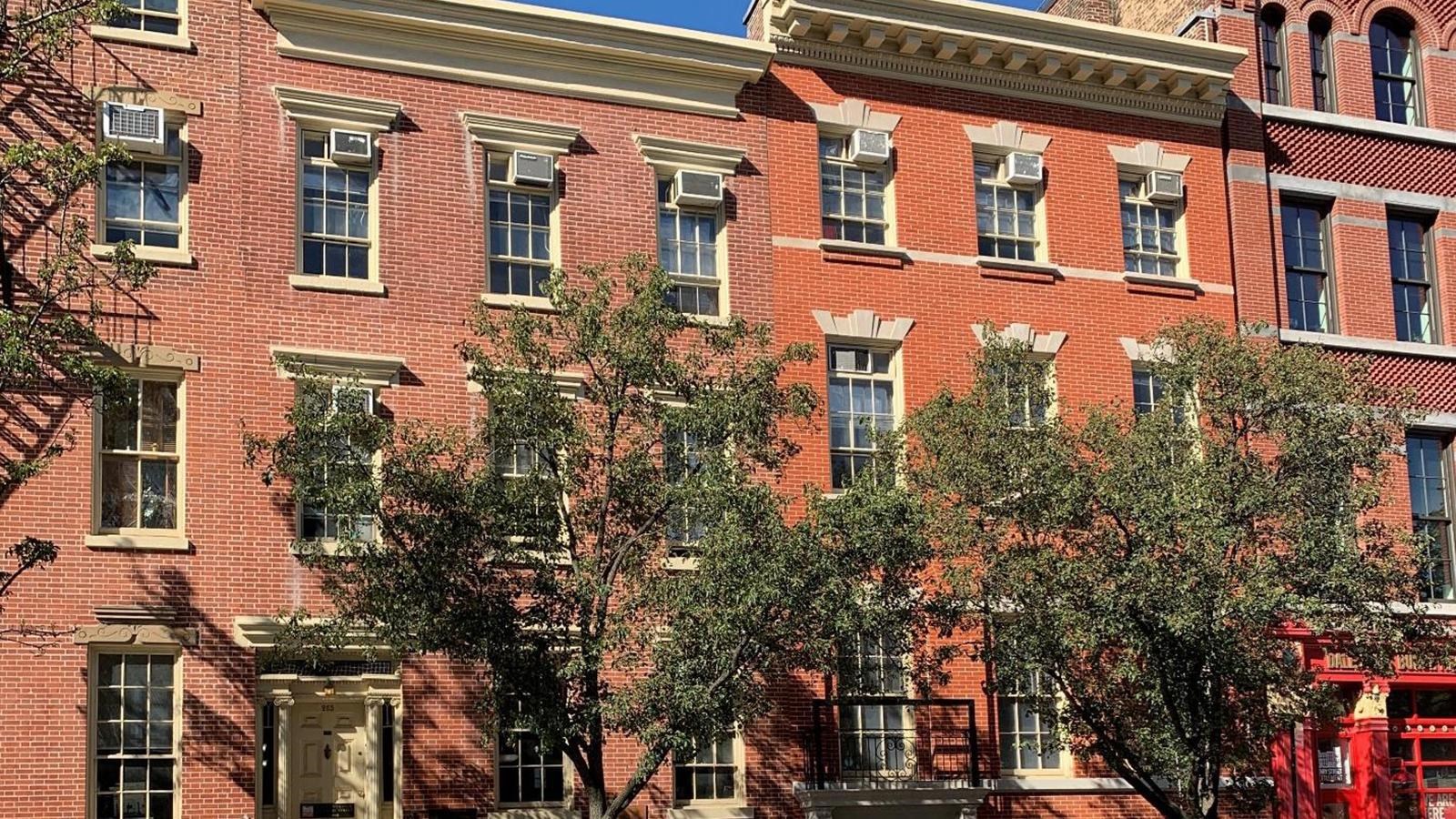Last updated: February 19, 2025
Place
Lillian Wald House

Photograph courtesy of New York State Historic Preservation Office
Quick Facts
Location:
265 and 267 Henry Street, New York, NY
Significance:
Health/Medicine, Social History (Women), Social History (LGB)
Designation:
Listed in the National Register – Reference number 100007409
OPEN TO PUBLIC:
No
MANAGED BY:
The Lillian Wald House, located in the Lower East Side neighborhood of New York City, was listed in the National Register of Historic Places in 2022. The property is significant as the residence and workplace of activist and humanitarian Lillian Wald. Wald is considered the founder of modern-day public health nursing, which she pursued through founding and running the Henry Street Settlement from 1893 to 1933.
In the Henry Street Settlement, Wald provided social services for the largely-immigrant populations of the Lower East Side. During the Progressive Era, settlement houses like the one on Henry Street emerged to bridge the divide between the urban rich and poor. Middle-class volunteers would live in these settlements, located in poorer communities, and provide their neighbors with social services such as childcare, civics and English lessons, and healthcare.
The residence consists of 2 buildings in the Henry Street Settlement. The Henry Street Settlement was designated a National Historic Landmark in 1974.
Trained as a nurse, Wald’s particular focus was on providing residents of the Lower East Side with high-quality medical care. The Henry Street Settlement achieved this through their team of “visiting nurses,” who lived in the settlement and traveled to the homes of residents. By the time Wald retired in 1933, the settlement had employed over 260 nurses and served over 100,000 patients.
Within the communal, all-female living space of the settlement, Wald developed a familial environment with the other women who lived and worked there. As a member of the first generation of “New Women” at the turn of the century, Wald rejected traditional gender roles and instead forged a different model for domestic and familial life. While Wald never labeled herself as a lesbian, she formed deep platonic and romantic relationships with several of the women who lived at Henry Street. Beyond the more insular community within Henry Street, Wald also maintained social ties with other prominent LGB women in the reform movement, including Jane Addams and her partner, Mary Rozet Smith, Bryn Mawr president M. Carey Thomas, and Wellesley College professors Vida Scudder and Florence Converse, many of whom visited the settlement to discuss social reform.
Beyond quietly creating a supportive environment for LGB women and advocating for the immigrant poor, Wald was also involved in a number of other social causes. In fighting for women’s rights, she was a part of the women’s suffrage movement and supported access to birth control. She was also a fierce advocate for labor protections, particularly for children. And in 1909, alongside colleagues W.E.B. DuBois and Jane Addams, Wald became one of the co-founders of the NAACP, an extension of her work in New York City’s growing Black communities. As a space of social work, community, debate, and domestic intimacy, the Lillian Wald Residence is a testament to the intersectional activism of Lillian Wald and other figures of the Progressive Era.
This nomination, which was prepared as part of a National Park Service Underrepresented Communities Grant, was administered through the New York State Historic Preservation Office.
In the Henry Street Settlement, Wald provided social services for the largely-immigrant populations of the Lower East Side. During the Progressive Era, settlement houses like the one on Henry Street emerged to bridge the divide between the urban rich and poor. Middle-class volunteers would live in these settlements, located in poorer communities, and provide their neighbors with social services such as childcare, civics and English lessons, and healthcare.
The residence consists of 2 buildings in the Henry Street Settlement. The Henry Street Settlement was designated a National Historic Landmark in 1974.
Trained as a nurse, Wald’s particular focus was on providing residents of the Lower East Side with high-quality medical care. The Henry Street Settlement achieved this through their team of “visiting nurses,” who lived in the settlement and traveled to the homes of residents. By the time Wald retired in 1933, the settlement had employed over 260 nurses and served over 100,000 patients.
Within the communal, all-female living space of the settlement, Wald developed a familial environment with the other women who lived and worked there. As a member of the first generation of “New Women” at the turn of the century, Wald rejected traditional gender roles and instead forged a different model for domestic and familial life. While Wald never labeled herself as a lesbian, she formed deep platonic and romantic relationships with several of the women who lived at Henry Street. Beyond the more insular community within Henry Street, Wald also maintained social ties with other prominent LGB women in the reform movement, including Jane Addams and her partner, Mary Rozet Smith, Bryn Mawr president M. Carey Thomas, and Wellesley College professors Vida Scudder and Florence Converse, many of whom visited the settlement to discuss social reform.
Beyond quietly creating a supportive environment for LGB women and advocating for the immigrant poor, Wald was also involved in a number of other social causes. In fighting for women’s rights, she was a part of the women’s suffrage movement and supported access to birth control. She was also a fierce advocate for labor protections, particularly for children. And in 1909, alongside colleagues W.E.B. DuBois and Jane Addams, Wald became one of the co-founders of the NAACP, an extension of her work in New York City’s growing Black communities. As a space of social work, community, debate, and domestic intimacy, the Lillian Wald Residence is a testament to the intersectional activism of Lillian Wald and other figures of the Progressive Era.
This nomination, which was prepared as part of a National Park Service Underrepresented Communities Grant, was administered through the New York State Historic Preservation Office.
